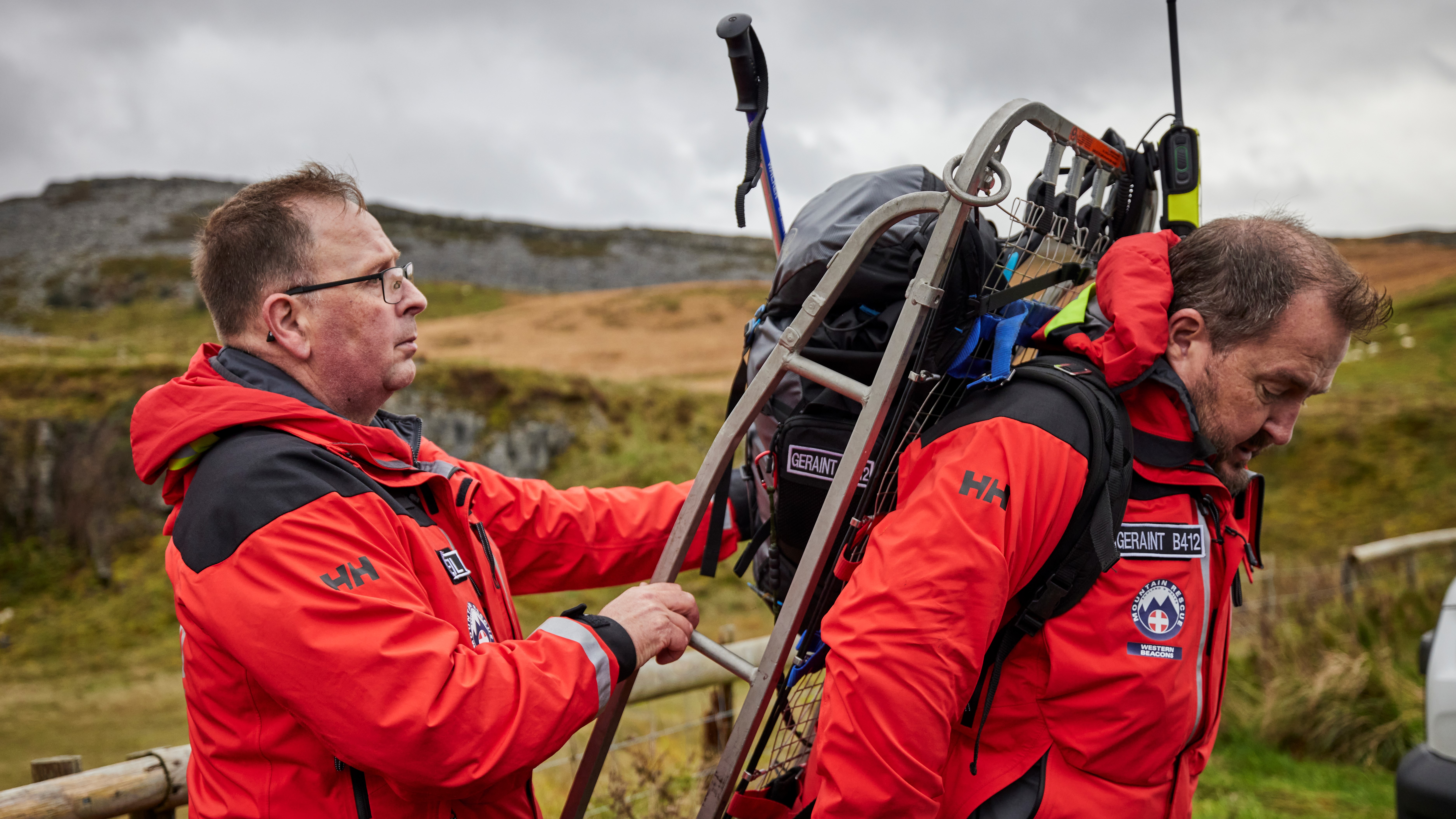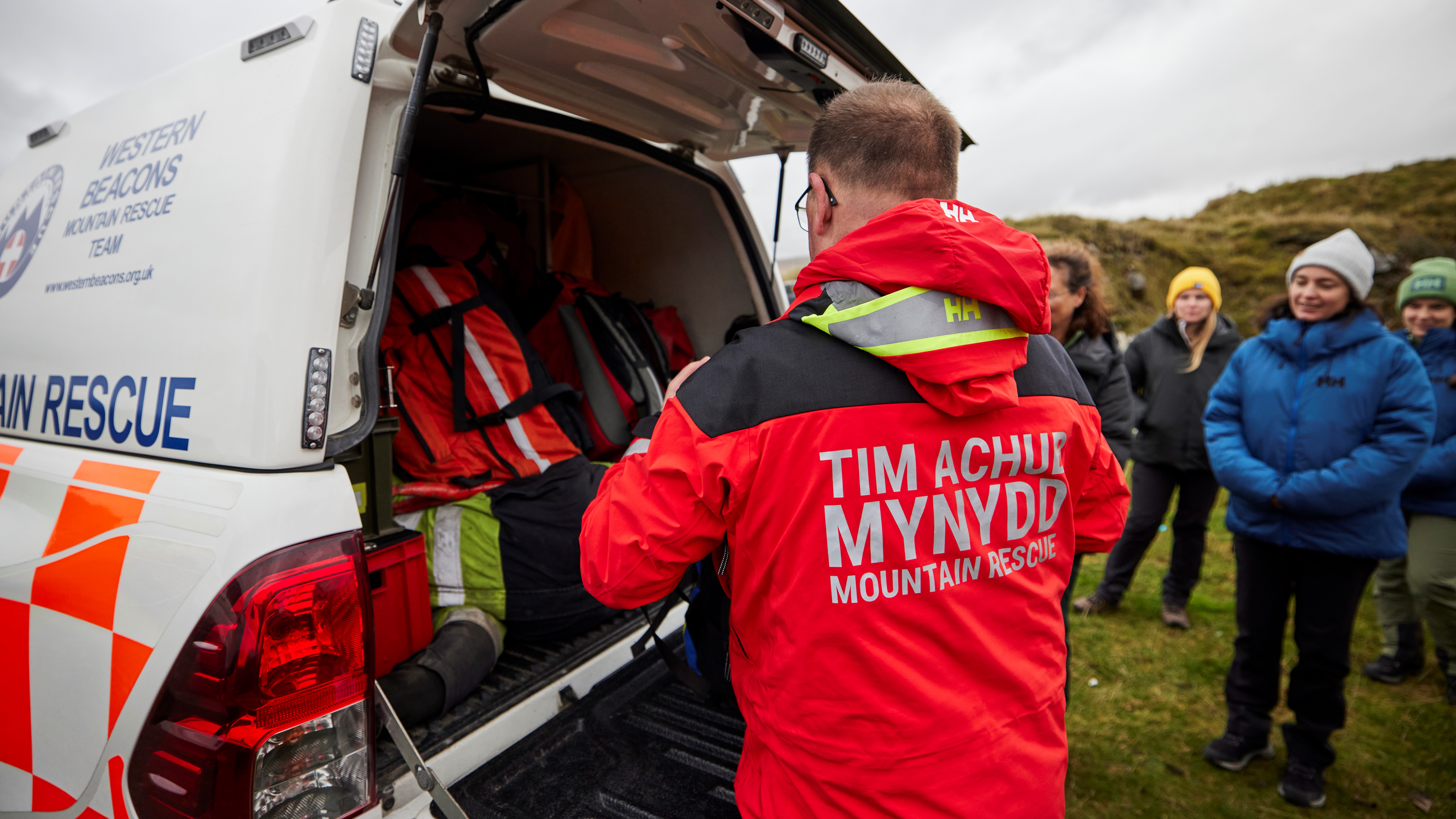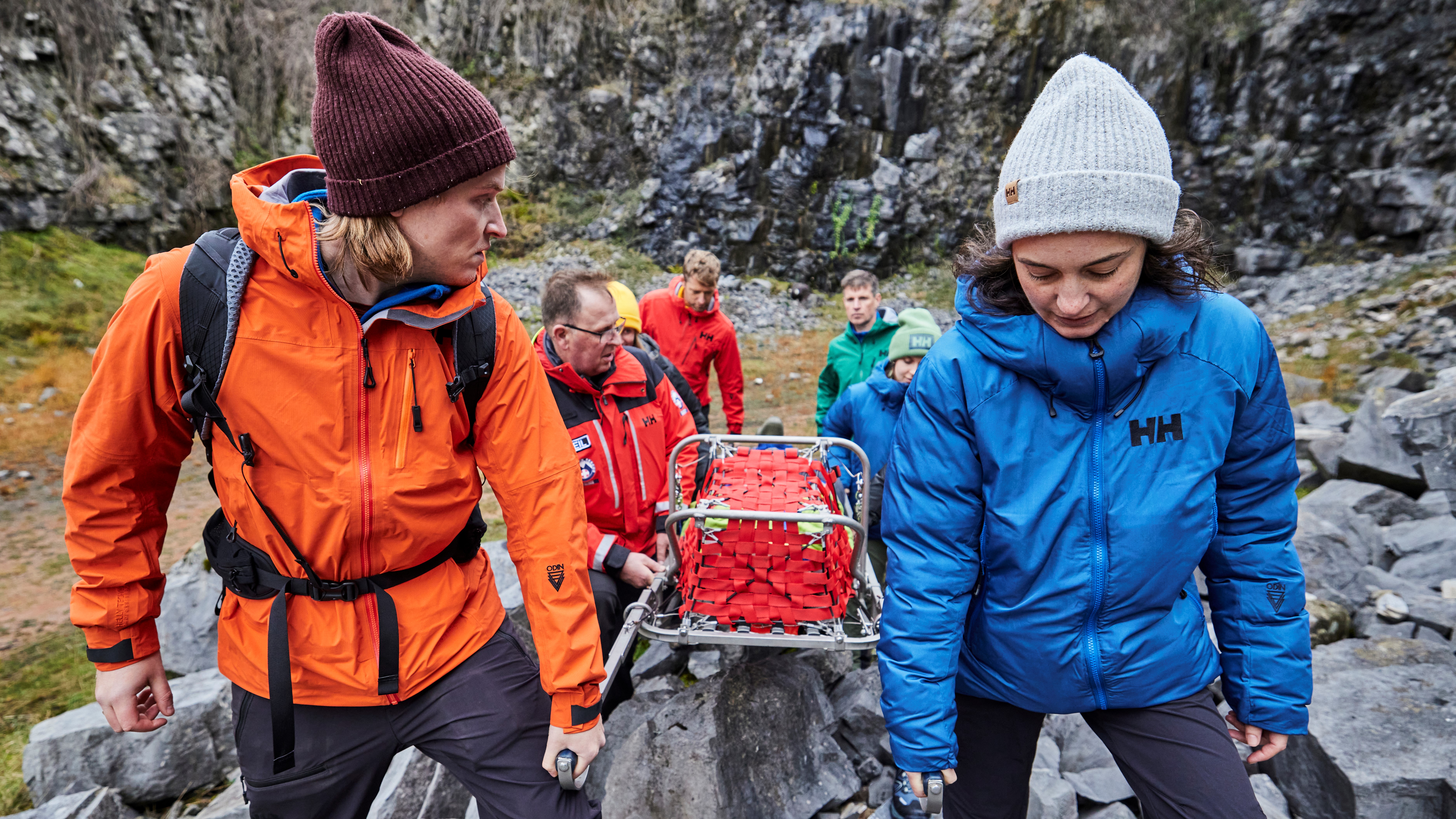I spent a day in the hills with mountain rescue, and I’m never going out unprepared again
It turns out calling mountain rescue isn't like calling an Uber...

If you clicked on this article seeking a story of the desperate plight of one stranded hiker struggling to survive overnight at subzero temperatures, I’m afraid you might be disappointed. I’m not painstakingly typing this using the nubs of my gangrene-wrought fingers, lost to the ravages of frostbite, because I’ve never had frostbite. In fact, I’ve never really got properly lost on a hike, never mind required the services of mountain rescue.
I do have friends who have spent unplanned nights in the wild. One, a diabetic, whose first date with her now-husband was a mountain biking trip in Fruita, CO that ended with them spending an accidental night on the slickrock rationing her insulin.
Worse, two friends who took a chance on the gnarly Maroon Bells in October, far too late in the season, and weren’t back by nightfall. After a gut-wrenching couple of days waiting for news in our small town, only one was brought out alive. But this far, I've avoided such mishaps.

“Any of us could get into trouble at any time.”
My boyfriend would say it’s because I’m too organized to have such a misadventure, and yes, I do my research, I check the weather, and am getting better about telling someone where I’m going. But deep down, I know it really all comes down to the luck of the draw.
“Any of us could get into trouble at any time.”
This is practically a mantra repeated multiple times by Geraint, an affable member of the Western Beacons Mountain Rescue Team with whom I recently spent the day out in the Brecon Beacons in south Wales.
These low-lying mountains are home to one of the most significant cave systems in Europe, and the rescue team was among some 300 involved in the successful rescue of an injured caver who spent 54 hours underground before being brought to light via the longest stretcher carry in British history.
All the latest inspiration, tips and guides to help you plan your next Advnture!
Stories like these demonstrate the enormity of what goes into mountain rescue, how tremendously unassailable those who carry out rescue missions are, and how calling for mountain rescue really, really isn’t like calling an Uber.

Most of us think that if we get into trouble on a hike, we can just ring for help and it will soon come, and we’ll be home for dinner. Technology like GPS watches and emergency beacons, and even RECCO Reflectors has no doubt fed into this illusion. However, there are an almost unfathomable number of hours of training, expertise, expense and equipment that go into getting you out of a sticky situation and when you learn how much, you wonder how it ever gets off the ground at all.
We start walking. It’s a gentle walk through lovely countryside, Geraint stopping occasionally to point out interesting features such as an old tramline from the mining days gone by. These are used to refine our map reading skills as we compare our surroundings to the features on an Ordnance Survey map of the area. Prompted by the rescuers, we identify a stand of trees on our left to help orient ourselves on the map.
Only a few minutes later, they ask us to orient ourselves again, using the same woodland. The map still shows it as being to the west, but in 3D the trees are gone. We’re slightly lost. The map is a new edition, but we’ve rounded a bend and deforestation means the woodland isn’t as big as it used to be, so we can no longer see it when we think we should be able to. Turns out our navigation skills aren’t as sharp as we thought.

After a couple of miles, we stop and are instructed to pretend that one of our teammates has broken her ankle. Something that could indeed happen to anyone, at any time. What do we do? Well naturally, we all pull out our phones to call for help. How else would you get an Uber at this hour? Except that not a single one of us has service. We’re really not very far from the car, but in an emergency, we’d be stuck if we were totally reliant on our phones.
We decide that if this were really happening, we’d send Advnture Consulting Editor Pat Kinsella for help, since he’s an avid trail runner and nimble on his feet. But in real life, there might not be a Pat. You could be alone, without a map, and even if you do have service and a map, the trees you were using to navigate have been cleared, so you don’t really know where you are.
Here, the team introduces us to an app that I'm never taking off my phone, OS Locate, which helps you quickly identify and communicate your location, even when you don’t have service (note: this is UK-only). One of our colleagues from Yachting Monthly tries it, and within moments, Geraint has received a message via WBMRT with our position. So assuming you’re conscious and have access to technology or a fast-footed, uninjured friend, you’re in good standing for an imminent rescue mission. Now we sit back, relax and wait for our ride.

Just kidding. In a real-life scenario, getting the call out that you need help and communicating your location triggers a highly complex mobilization response that is actually years in the making.
Let's go back to the beginning. In order for a unit such as WBMRT to even exist, there has to be fundraising, and by that I mean a lot of fundraising. WBMRT needs to raise between £25,000 and £30,000 ($30-$36K) each year just to cover overheads, according to their fundraising page.
The Toyota truck that Neil and Geraint arrived in cost £39,000 used (around $48,000). It’s absolutely brimming with medical and rescue equipment that costs many thousands more. None of this is supplied by the government. It exists because volunteers like Neil and Geraint decide it’s worth their time to fundraise for it.
Due to their efforts, the team exists in the form of about 100 volunteers, which covers one of the largest areas covered by a single Mountain Rescue Team in the UK. They go through extensive training in fitness, navigation and medical care, which can take up to a year.
The training is grueling – only a few weeks previously, one of their team developed hypothermia during a training exercise. They operate 24/7, 365 days a year, which again might create a slightly inflated impression of safety for many in the mountains. But as I said, getting a message out to them is just the beginning.

Once your location (and ideally, details such as your condition) have been relayed to the organization, it’s time to assemble a team. No, they’re not just sitting around the station drinking coffee, flicking bits of rolled up paper at each other and waiting for your call so they can slide down a pole and come to your rescue.
Neil and Geraint have jobs. And families. They might be in the middle of Christmas dinner when you call, or if you’re really unlucky, away on holiday. The alert from central command goes out to the entire team, and as long as they’re within an hour’s drive (and presumably not tied up at work, healthy, sober and able to act), they have to respond that they’re available.
Out of a team of 100, you’re bound to be able to get at least eight able bodies you’d think, so things are looking up! But again, you better think twice about breaking your ankle on a remote mountain on Christmas Day.
So plan on it taking at least an hour just for the team to be assembled, and drive to the closest point for vehicles (assuming this will be a foot rescue).
What are you doing all this time? I can tell you that despite the mild conditions and our multiple layers, I was getting a bit chilled with all this standing around. Good thing we had an emergency shelter to huddle in, but without it, subtract a couple of degrees and a lot of expensive Helly Hansen kit, and you’re starting to look at hypothermia while mountain rescue is loading gear out of the truck.

Let's talk about the gear. They know you have a broken ankle, so that means they need the stretcher. That weighs about 20 kg (44 lbs) empty and is carried in two parts to the scene like a backpack, then needs to be assembled. Then there’s a medic bag and blankets and ropes in case you’re down in one of the area’s many sinkholes or quarries.
Back at the parking lot, we passed around the gear to feel the weight – I’m smallish but medium-strong for my 5’4” stature and could barely lift the rope bag, so you’d better hope I'm not on your team when you need help. Each rescuer is loaded up with a backbreaking amount of gear before setting off on what might be many miles of rough terrain in treacherous weather. I’m starting to doubt they have a whole lot of knee cartilage left between them.
Finally, they arrive and put the stretcher together, which is pretty complicated. But now you can just lie back, relax and be ferried to safety, right? You might have guessed this, but it’s not that easy. By this time, we’ve assembled in a quarry and it’s taking eight of us to load a 50 kg (110 lb) dummy onto the stretcher. That’s not a very heavy person, so if you weigh twice that, let's hope a big team comes for you.
As it is, we need to attach a bicycle wheel to the bottom of the stretcher to help us roll it along, which takes some of the load off but is precarious. We lift the stretcher and the wheel plus our group size make the carrying easier than I feared, but everything else makes it difficult.
We’re all different heights, for starters, and we’re clambering over really rough terrain, the type you’d expect when you’re, oh, literally anywhere in the mountains. It’s difficult to keep the stretcher level, and extraction isn’t as simple as just marching the patient out. All the weight is on one shoulder, which gets tiring fast, and every time any member of the team needs to switch, we have to stop and change sides.
The constant jostling often induces motion sickness in an already injured or sick patient, so if you’re the one in the stretcher, you may have to vomit. You’re strapped in, however, so this involves stopping and setting you down or tilting you to one side. It’s not pretty and it's going to take hours.

Of course, the movie version of this story ends with you being spoon fed hot soup by a lovely nurse and and Neil and Geraint arriving back at the dinner table in plenty of time to enjoy the carving of the turkey, surrounded by their loved ones, but the reality may be far from that. You hopefully do get to safety, but the team still has to pack up the gear and take it back to central command. Chances are high that they’ve missed dinner altogether, they’re exhausted and probably have work the next day. They’re not getting paid a penny for this, but this is what they signed up for.
On the drive home, Pat and I agree that neither of us, despite an immense love for the mountains and decades of experience, is cut out for this kind of work. The temptation to simply spend a couple of hours looking for you then calling it a day would simply be too much for lightweights like us.
Mountain rescue is serious work. The men and women that devote themselves to it are outstandingly selfless and remarkably positive about it. They're truly happy to come and assist you if you break your ankle or get into trouble in the mountains. Even if you’re somewhere you shouldn’t be in bad weather wearing flip flops (though you will get a talking to for such behavior). But it’s going to take a lot of people power and non-guaranteed resources to reach you and the best thing you can do is help them out.
Be prepared. Don’t hike alone. Tell someone where you are going. Learn how to navigate. Any of us could get into trouble at any time and calling mountain rescue isn’t like calling an Uber.
Julia Clarke is a staff writer for Advnture.com and the author of the book Restorative Yoga for Beginners. She loves to explore mountains on foot, bike, skis and belay and then recover on the the yoga mat. Julia graduated with a degree in journalism in 2004 and spent eight years working as a radio presenter in Kansas City, Vermont, Boston and New York City before discovering the joys of the Rocky Mountains. She then detoured west to Colorado and enjoyed 11 years teaching yoga in Vail before returning to her hometown of Glasgow, Scotland in 2020 to focus on family and writing.

